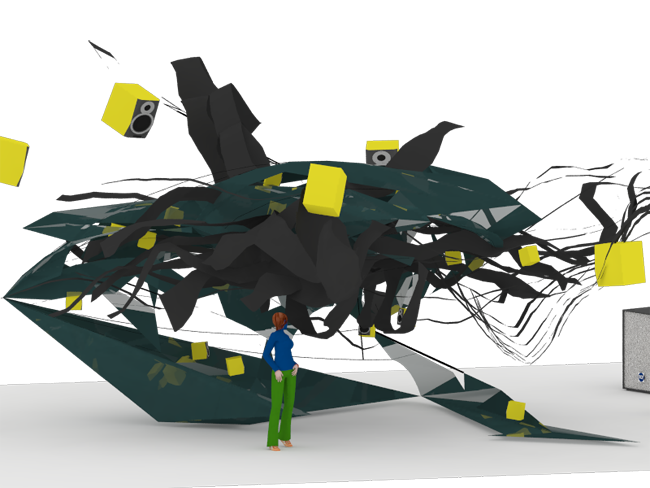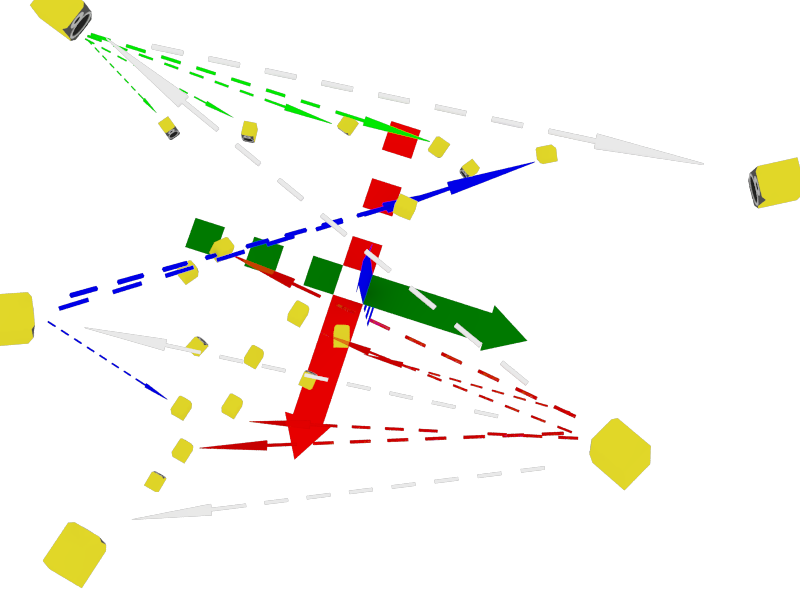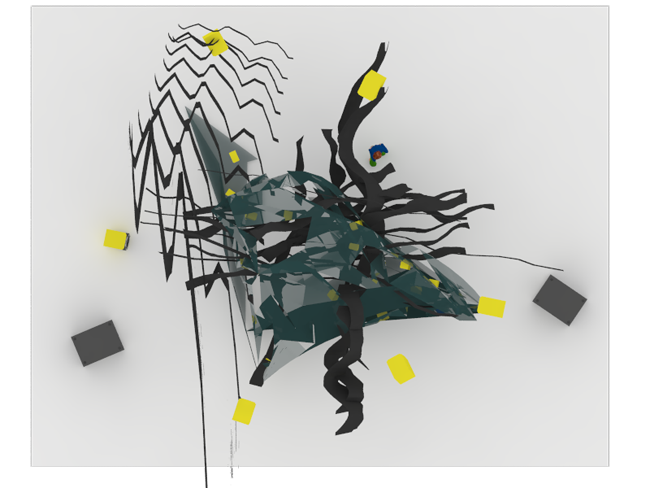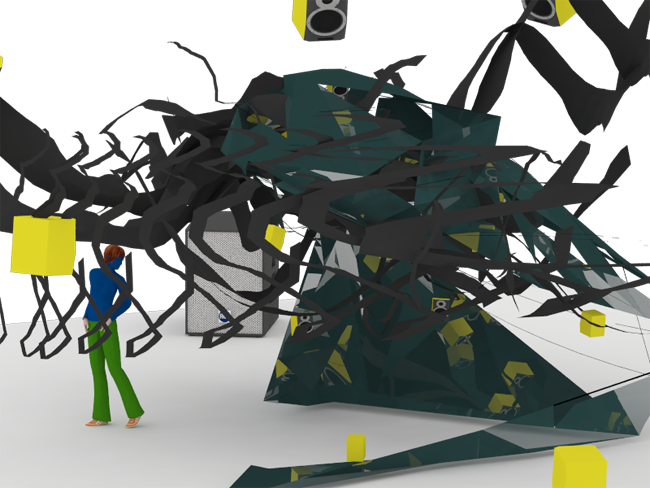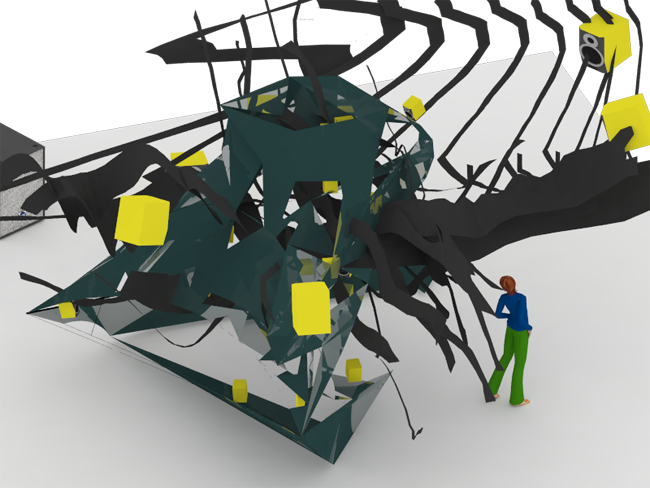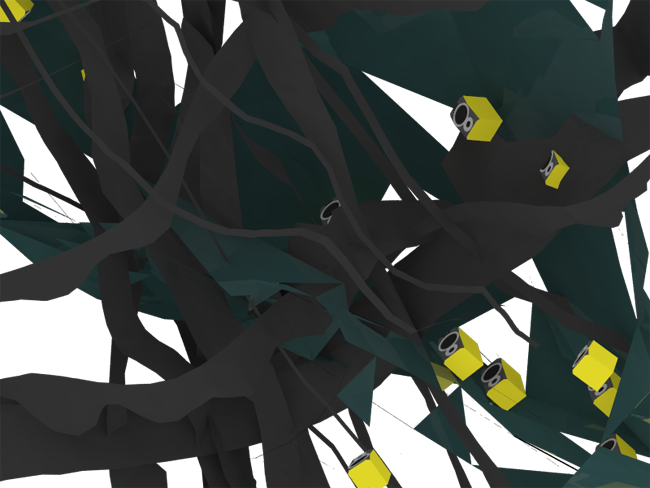project
+++++++++++++++++++++++++++++++++++++++++++++++++++
Many people worked on synesthesia with audio and video. The age of information moves to an age of physical information using conceptual and intelligent software, robotics, and real digital fabrication.
In the years 2009 and 2010, I have been interested in materializing music. Writing a traditional score is most of the time not adequate because time and perception do not behave the same way as for instrumental music. Frontiers between the creative process and performance process merged thanks to the non-linearity of time with algorithmic arts. Also, a generated piece does not have one single timeline. It is something much more complex that could only be described and written linearly until the combinatory pieces of Stockhausen in the 60s. Thus, representation and score combine in many cases and the need to write or describe music is very different from the one for instrumentalists.
The obvious way to do so is the use of dimensions, space, and geometry. Many classical music composers use geometry. In our case since the only material constraint is perception rather than playability, it is possible to extend this geometric abstraction in space; the real world.
I use geometric and architectural rules to represent and generate musical structures with the same approach as Yannis Xenakis used to do in the 70’s. Geometry is a powerful tool mostly used for information theory and representation. It is also a great inspirational source for the genesis of musical forms.
De Saussure’s structural linguistics is another story but architectural structuralism through computational design is not an end. Scales and dimensions take an important role by adding other organized elements to any kind of so-called structure. This article illustrates this idea with an installation project of materialized music I am willing to create in the near future: A small construction whose design follows the same structural rules as the music and spacial movements played inside: Formahaut ß.
This piece is the next step for City of Flowers first presented at the Shanghai eArts festival and Kaspar. This piece has been supported by the Dispositif pour la Création Artistique Multimédia (DICRéAM) in July 2010.
Formahaut ß is a 5 meters wide digital fabrication (3d printing) made of fake or real spider web. A few eggs can be inside as a dedication to Louise Bourgeois. People are preparing themselves before getting inside the structure. This time it is a music concert with a beginning and an end.
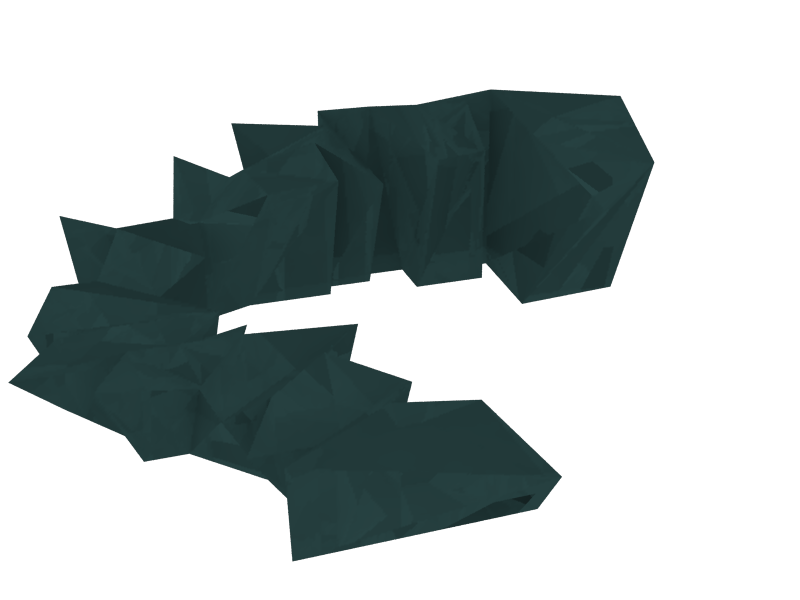 |
A big effort is made on a parametric composition because this is building the sound, the real structure, and their moving light reflections. A multichannel audio system diffuses 3d 3D-generated music made from the same emergence as spider multi-agents. Rules directly come from geometric information theories. A huge work of sound movements following the lightened web will be done in the same way I do in my usual productions. This time, it is going to be in the media art piece. As usual, the challenge is to make people understand the relation between what they see and what they hear. |
The piece can be seen as a concert with a usual ritual: visitors at the entrance and myself sometimes performing the system in a live situation.
To avoid the piece being a pure structuralist piece, a rich symbolic part is added with this impressive 5-meter-wide spider web. People are listening to dark evolving music from symbolic “poppy” music to pure and clean minimalist. Visitors are watching and hearing the death of music.
Sculpture :
The very light and eventually semi-transparent used material consists of several layers of inflammable cardboard and glue. As said before, the whole thing is maintained as much as possible by wires from the cellar.
As shown on the drawing, it is high enough to let people get inside and sit on the floor. A sofa may be installed under the structure for comfortless and also invite people to come in.
As for any cocoon, few visitors can enjoy the inside. This is the reason why the structure is kind of open on one side. Outside guests can pass by or watch the show. They do not really feel outside thanks to the speaker’s placement (see below) and the form of the structure.
Note that the sculpture shown in the drawing is not the final version. I plan to program it in a way that would contain more perceivable repetitions.
 |
 |
Spider web :
Spider webs are far to be random patterns. Spiders can be classified by the type of web they build. Argiopes can be easily found in most temperate countries. Their bit is harmless for humans. Like most garden spiders they eat insects. Their web looks like an “X” and is practically invisible with normal lighting. After some tests, I noticed it was even more reflexive than aluminum wires.
Visitors will not see all the webs around them until the light goes down and some light is sent on them.
A base structure has to be built in order to force the spiders to build their web. This rounded wired structure is shown in brown in the drawings. They come from a radically opposite generative system of the green sculpture. Although repetitions emerge (see the thin part at the side) it contains a lot more randomness. We leave the 1970’s with its structuralist and add something more organic.
Spider webs stick on this structure and give liveness to the sculpture. The form from :) the web gives a pseudo-repetitive microstructure. The texture also becomes granular and evolute with the time since there will be more and more web on the brown part. The exhibition will end with a space invaded by webs until the sculpture itself “disappear”. Here we can talk about natural emergence using multi-agents; the spiders. To give an idea, cellular automata are also multi-agents.
Spider web is very strong and can be elongated far away from the structure to give a single and super thin line of light along the space.
In case of a problem spiders probably have to be helped or even be replaced by artificial ones.
Light :
For City of Flowers at the eArts festival and Crossing the lines in NYC a computer was controlling both the lighting and the sound. The difficulty does not remain in the synchronicity. Finding the proper synesthetic relevance is an issue. Using light with sound can often spring a kitsch result. This is yet another challenge…
The projections onto the web can be made by at least two medium-powered DMX-controlled moving head lights. It can also be made by two relatively powerful video beamers.
-
• We see the entire structure if the light is sent on it.
-
• We only see a very constrained part of the structure when a ray of light is sent. It springs just a ray of web and the rest is in darkness.
-
• Finally by changing the angle, the angle changes on the web. We then see millions of moving dots in a 3d space.
Sound :
The sound system is very important since this piece is considered a sound piece. The music is computer generated. There are two modes: one automatic and one manual to sometimes make performances.
Structure :
As explained in the previous document, most of the musical structure comes from the same algorithmic system as the sculpture itself. It is a materialization of music.
In all of my previous works, I have always paid attention to the rhythm I consider as being the skeleton for time-based art. For the concept of this piece, it is important to evolve between something minimalist and something rich in terms of structure (rhythm and macroscopic form).
It is often difficult to make the junction between time-based art forms and installations. The struggle does not come from the piece itself but from the way, the visitor apprehends the piece with time. Therefore, the piece does have a timeline. It does not have a real beginning and end but there is a form. My tools for music formalization allow me to generate as many versions and surprises as I want while keeping a constant form. It is not a single process all along the piece but rather a controlled form as we are used to listening to popular music. The fact things are more prepared in advance allows a better control of esthetic sound processes one hears in modern music (ex: side-chain compression <- Stockhausen or Daft Punk).
Timbre :
Another interesting question is the integration of the sound with the pieces in the neighborhood. To avoid possible problems of interference, the sounds have to be “silent”. This is why most of the pieces will be in high and low registers. This is also an aesthetic choice to have thin, precise, and relatively new sounds.
Pure timbres and minimal comprehensible structure make us think about early electronic music pieces or some of the current German music. It is far away from Ircam but rather close to what you hear (and see) Raster Noton, BPitch Control, and maybe Warp Records. Imagine simple sounds and music with complex rhythms in relation to the structure you see at one given moment.
Spatialisation :
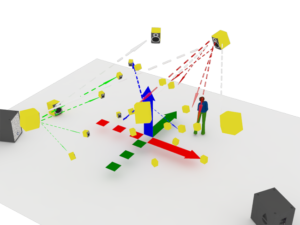 |
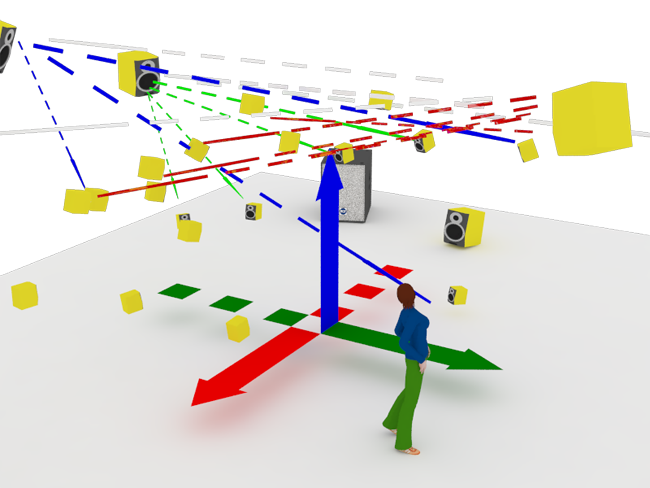 |
The direct way to materialize sound is sound spatialization.
After long thoughts and price studies, I am thinking about 8~18 small speakers (cheap high-quality PC speakers), 5 big and good speakers, and 2 sub-woofers.
The small speakers are located in the structure; the big ones are around the space. People inside can hear precise sound movements from the small speakers. People located outside mostly hear sounds from the big speakers. It is then also possible to play with inter-relations between the inner and outer, big and small…
I am not planning to make sound movements but rather play with the opening and the closing of speakers. This is a technique I often use for pieces for ensemble. The sound is sent to the speakers one by one with a specific envelope of amplitude and at a specific time. The result goes from a super efficient and fast blast of sound grains to a smooth rhythmically written control of the space synched with the music itself.
all the speakers outside and inside the structure
from the top








